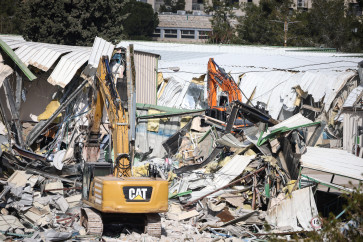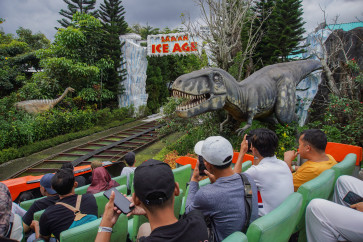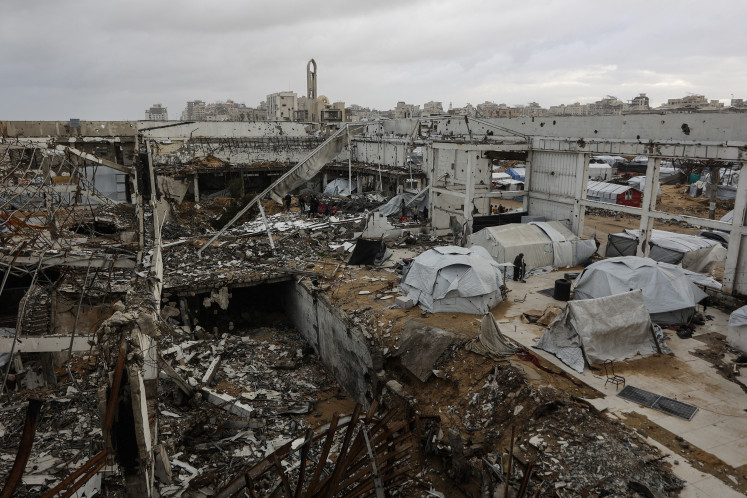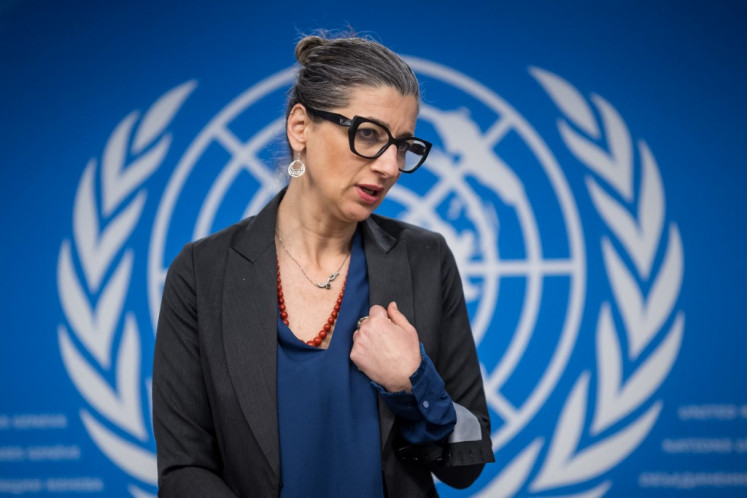Popular Reads
Top Results
Can't find what you're looking for?
View all search resultsPopular Reads
Top Results
Can't find what you're looking for?
View all search resultsCan a nation afford its own treasure?
Middle Eastern traders carrying swords with golden hilts sailed a ship filled with goods such as intricately carved ceramics and glimmering green glass wares from the Eastern Mediterranean
Change text size
Gift Premium Articles
to Anyone
M
iddle Eastern traders carrying swords with golden hilts sailed a ship filled with goods such as intricately carved ceramics and glimmering green glass wares from the Eastern Mediterranean.
Alas, the ship, along with the hundreds of thousands of trade wares, sank in the waters of the archipelago when making its way to the Kalingga kingdom in Central Java.
So went one scenario suggested by Adi Agung Tirtamarta, the CEO of one of the private companies involved in the excavation of over 270,000 artifacts from a sunken ship about 90 miles North West from the city of Cirebon, West Java.
Another scenario suggested that Middle Eastern traders had stopped by in India and China to pick up goods before crossing the Molucca strait and met their final fate in the sea, he said.
Romantic as the tale seemed, the story of its finding, up to the recent auction, which attracted no bidders in Jakarta, had been less so, for it revealed that Indonesia’s sunken treasures might be too costly to handle alone.
Local fishermen were the first to discover the Cirebon wreck, which came to rest more than 50 meters below sea level. They then sold the position to PT Paradigma Putra Sejahtera-Adi Agung’s company.
What is telling is that they did not report the find to the local authorities.
“Perhaps they thought reporting to companies wouldn’t get them any compensation, so they asked the government what companies work in the excavation of sunken cargo from ship wrecks,” Adi Agung said.
The company proposed to the government its survey and excavation plan, which was issued in February 2004. The recovery process, completed in October 2005, took 18 months.
According to the artifacts’ catalogue, the majority of the ceramics found at the wreck were produced during the Five Dynasties in China’s Zhejiang Province, where an early form of porcelain called the Yue ware were produced.
History enthusiasts protested the government’s plan to auction some of the discovered artifacts.
Even the Cirebon Kasepuhan palace urged the government to cancel the auction and preserve the goods for the sake of the nation’s culture. A protester attending the auction, which took place last week, angrily denounced the process.
However, the National Committee of Excavation and Utilization of Precious Artifacts from Sunken Ships (Pannas BMKT) — a newly formed entity established in 2007 by Presidential Decree — waived off the notion that the country is auctioning away its heritage.
“To be fair, the ceramics found here do not contain Indonesian culture. The ship was passing by, and it sank. Those are all Chinese ceramics,” Culture and Tourism Minister, Jero Wacik, who is also deputy chairman of Pannas BMKT, said during the auction.
He added the state had kept over 970 pieces for the sake of historical collection. The pieces were chosen due to their uniqueness. “We have an archeological team to decide whether an item is unique or not, if a piece was one of a kind, then it would be taken by the state,” he said.
The remaining 271,000 pieces are to be auctioned, with the proceeds being halved between the excavation companies and the government.
“The money [from the auction] will be used for public good,” Jero said.
Sudirman Saad, Pannas BMKT’s secretary-general, said the artifacts that are to be preserved by the state were being kept in a government warehouse in Cileungsi, West Java, while the rest were kept in a privately-owned warehouse in Pamulang, South Jakarta.
Despite the safekeeping for culture’s sake, the government had not yet found or built a museum to store the artifacts.
Jero said the cost to build a maritime museum might be too high for the project to be feasible. “We have calculated the cost … about Rp 400 billion [US$44 million], but I don’t think we can ask that from the state budget right now,” he said.
He added the process of surveying and recovering sunken treasures was too costly for the state to handle.
The auction attracted zero bidders, but the government claimed it was a step forward.
Fadel Muhammad, the maritime affairs and fisheries minister, said that during the Soeharto era many underwater artifacts were stolen and sold in auctions without the state given a share of the money.
“With [auctions] happening, what is important is the process is transparent. We are not like we were in the past …” he said.










